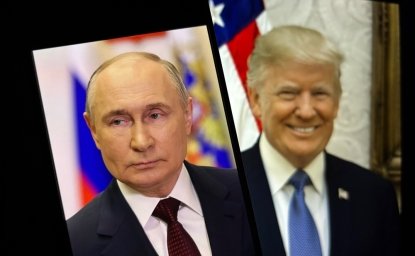180. Kosovo: Policy Implications and Future Challenges

After two and a half months of NATO bombing, fighting between the Yugoslav Army and the KLA, and the exodus of half of the Kosovo Albanian population, the war has ended. Though both sides were claiming victory there was little to celebrate except that the killing and destruction were stopped. The agreement reached amounts to a truce, while no political settlement is in sight. Did diplomacy fail in Paris as well as the formidable military power of NATO in the field or is this a crisis which cannot be resolved by any means?
Compared to Kosovo, Bosnia looks like a simple equation yet even four years after the Dayton Accords there is no political settlement. The price paid in 1995 to stop the war was acceptance of the results of ethnic cleansing which forced 2.8 million Bosnians or 60% of the prewar population to "relocate." Three ethnic territories created in the Dayton Accords co-exist in peace but their common state does not function though Muslims, Serbs and Croats lived together for centuries, forging a common culture and speaking the same dialect of Serbo-Croatian. In 1991, more than a third of the population lived in mixed marriages or was a direct product thereof.
Kosovo on the other hand has been inhabited throughout history by two different nations, speaking different languages and keeping separate cultures. Both claim Kosovo as their land and for both the issue is much larger than the land itself. There are two mutually opposed interpretations of history. Both are not only selective but partly based on myths.
Ancient history is relevant to the extent that it has been imprinted in the conscience of the people there as a central part of nationhood. In its name, Kosovo, as the ancestral land, was raised to the level of a moral duty - for the Serbs, Kosovo represents a sacred part of their country. Albanians on the other hand, have developed a concept of one nation living divided in three states and after Yugoslavia fell apart, in four.
At this time, modern history prevents any political solution acceptable to both ethnic groups in Kosovo. The ethnic balance in the region of Kosovo kept changing over the centuries but the current proportion of 9:1 is a communist legacy. The process of disintegration of former Yugoslavia began in the late 1960s when far-reaching social and economic reforms were aborted and the country set on a course leading back to "real socialism." The faded ideology of communism was, however, gradually replaced by nationalism as the legitimate basis of the centers of power emerging in all six republics and the two provinces. Later in the 1980s, it was openly embraced by both the communist elites as well as the fledgling opposition. In this period, national mythologies vilifying other nations while glorifying one's own were successfully developed.
In the 1970s, Kosovo developed into an entity virtually independent and isolated from the rest of Serbia. In the 1980s, requests for the formal status of a republic, part of which was the right to secede, kept growing stronger. Such separatist moves were met by an awakening of Serbian nationalism and resulting assertiveness. These developments provided a perfect platform for Milosevic's rise to power and put both Serbs and Albanians on the road of no return.
After the autonomy of Kosovo was revoked in 1989, all Albanian institutions went underground and for a decade two parallel states existed - the official one controlled by Serbia and the other Albanian with its separate political institutions, education, health and even unemployment compensation, all financed by contributions of Albanians working abroad (3% of gross personal income).
Filled with tensions but minimal violence (except for human rights abuses), this period ended in 1997-1998 due to actions of the Kosovo Liberation Army (KLA). Armed rebellion replaced passive resistance. Milosevic's forceful response only galvanized support for the KLA and marginalized non-violence advocate and long-time Kosovo leader, Ibrahim Rugova. Elements of civil war prevailed in 1998, creating a "conceptual vacuum" and resulting in the postponement of the NATO demand that Milosevic pull out all forces from Kosovo. The agreement he accepted under pressure in October 1998 provided only a pause. Nobody expected it to last longer than the coming winter.
Dangers of the spread of the Kosovo civil war to neighboring Macedonia, thereby igniting a wider regional conflict, prompted an Euro-American attempt to impose a political resolution to the conflict on both sides. Serbian intransigence was expected in Paris but the surprise was its echo from the large heterogeneous delegation of Kosovo Albanians. Endorsement of the military commander of the KLA, Thaci, as head of this delegation, was a recognition of the fast growing power and influence of the rebels, but hardly a step toward a peaceful solution.
In order to make the Rambouillet agreement acceptable to Albanians they were promised a referendum after three years to decide the final status of Kosovo. This step alienated the Serbs. Replacing this provision later with an international conference "which will take into account the will of the people" also did not win Serb endorsement. Serbs repeatedly rejected the agreement in March because it would have led to the loss of sovereignty over Kosovo after the interim period of three years. This action resulted in the NATO ultimatum and the bombing campaign.
Even under heavy bombing this Serbian position did not change. Neither did NATO's determination to pressure Milosevic into submission. The May draft document of the G-8 opened a way out for both sides. It provided guarantees in a wider U.N. framework of continued Yugoslav sovereignty over Kosovo as well as an international presence with NATO at its core, strictly limited to the territory of Kosovo. Thus a political settlement, delineating the final status of Kosovo, has been sidestepped, allowing for an end of hostilities and the creation of conditions for the return of refugees.
The last chance for a peaceful settlement of the crisis may have been lost in fall of 1992, when leaders of Kosovo Albanians rejected the invitation of the then Prime Minister Panic to join the attempt put forth by the Serbian democratic opposition to unseat Milosevic in the December 1992 election. Only democratization with participation of Kosovo Albanians could have gradually defused the tensions and created an environment in which Serbs and Albanians could live together sharing the land they both claim. Today, such a solution is much further away then it was seven years ago and any attempt to force a settlement prematurely could prove to be disastrous.
The predominant role of the KLA, coupled with the exodus of Serbs and resulting resentment in the aftermath of the war could set the course toward independence of Kosovo. In the process, this would equalize once more the results of ethnic cleansing and vindicate again the Balkan radical nationalists' theses that only "ethnically pure" states will lead to peace in the region. So far, the price of condoning their strategies and accepting that concept has been the expulsion of some 350,000 Serbs from Croatia. In Bosnia almost half of the population, mostly Muslims and Serbs, are still displaced. Now Serbs from Kosovo are being added to this refugee population.
Redrawing of the borders of the former Yugoslavia began with recognition by the international community of administrative borders between the former Yugoslav republics during the early stages of the armed conflicts in the seceding republics. Independence or division of Kosovo would take this process a step further and mark the culmination of disintegration of former Yugoslavia but not its end. It would open the issues of Vojvodina and Sandzak as well as the status of Montenegro. It would also mark the end of Bosnia and probably lead to the demise of Macedonia. It is hard to imagine that the process would stop there. The problem with "greater" national states in that region is that their territories overlap (Croatia and Serbia, Albania and Serbia and Macedonia, Bulgaria and Macedonia, Hungary and Romania, etc.).
The status of Kosovo is an issue much larger than the future of that province and Serbia. It is rather about the future of relations in Europe, the system of security on the continent and the U.S. position as a global and European power. Any lasting solution should therefore be sought within a larger framework. The European Union must take the lead and find a way to "embrace" the entire region. Closing this "black hole" is the greatest challenge the EU faces in its current process of building a common security and foreign policy while simultaneously pursuing enlargement. Only creation of an institutionalized network of deepening interdependence, encompassing the entire Balkan region where most borders are arbitrary, could ameliorate nationalist conflicts and thus enhance both stability in the area and growth of democratic institutions.
Author
Senior Lecturer and Visiting Professor, Clemson University

Global Europe Program
The Global Europe Program is focused on Europe’s capabilities, and how it engages on critical global issues. We investigate European approaches to critical global issues. We examine Europe’s relations with Russia and Eurasia, China and the Indo-Pacific, the Middle East and Africa. Our initiatives include “Ukraine in Europe”—an examination of what it will take to make Ukraine’s European future a reality. But we also examine the role of NATO, the European Union and the OSCE, Europe’s energy security, transatlantic trade disputes, and challenges to democracy. The Global Europe Program’s staff, scholars-in-residence, and Global Fellows participate in seminars, policy study groups, and international conferences to provide analytical recommendations to policy makers and the media. Read more

Explore More
Browse Insights & Analysis
360° View of How Southeast Asia Can Attract More FDI in Chips and AI

The Growing Transatlantic “Big Tech” Rift Explained

Mapping Undersea Infrastructure Attacks in the Baltic Sea
